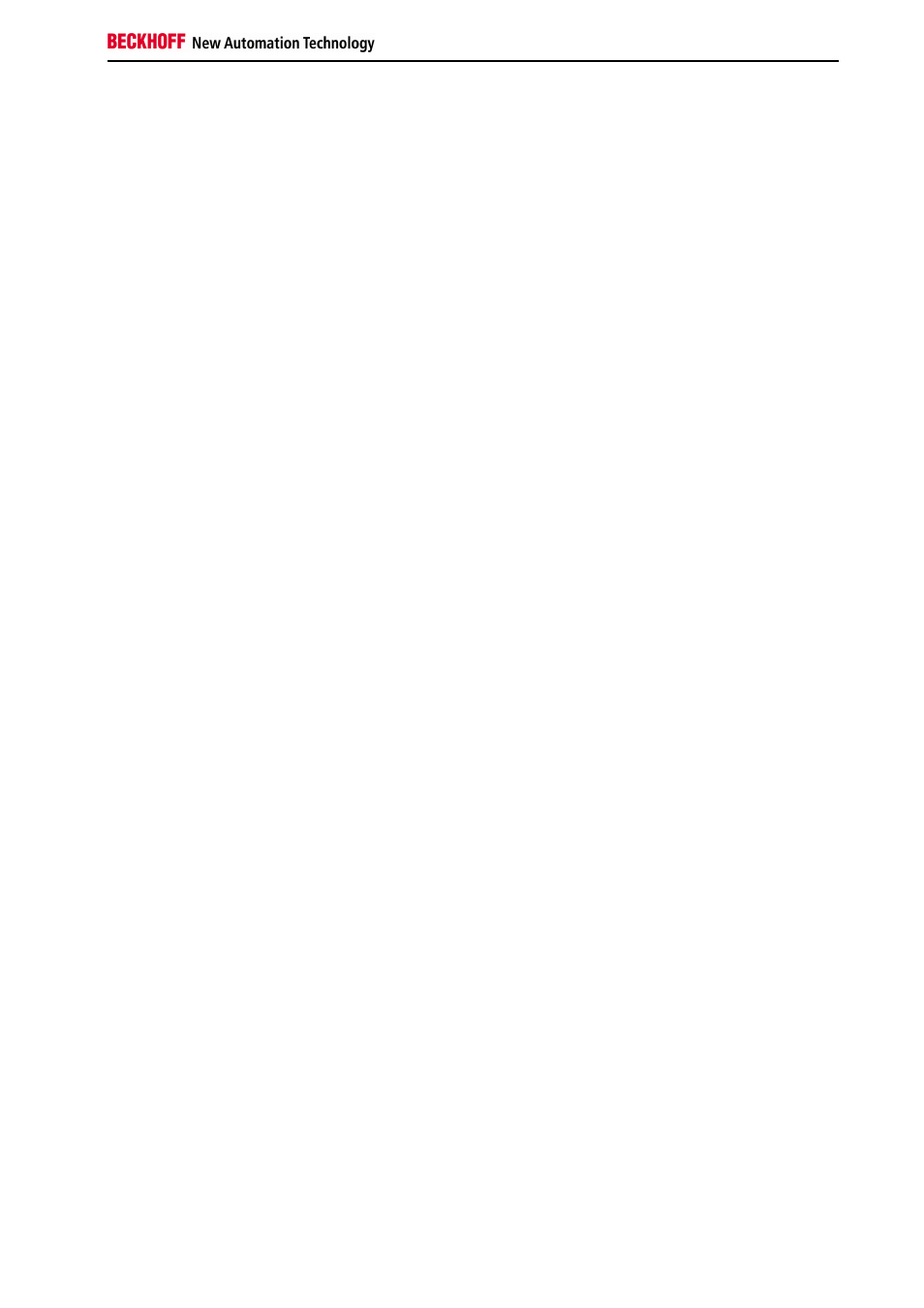Profibus dp comunication, Cyclic data exchange, Process data, process image – BECKHOFF BK3xx0 User Manual
Page 49

Notes on the Documentation
Fieldbus Components
47
5. PROFIBUS DP Comunication
Cyclic Data Exchange
Process Data, Process Image
The Bus Coupler includes different memory areas, each having a capacity of 256 words. Telegrams passing over the
Lightbus can specifically access any desired memory cell. The control and status bytes in the Lightbus telegrams can
be used to distinguish between two relevant regions of the memory and to address them separately. In order to
initiate a Bus Coupler update, the value in the control and status bytes must be 0x10, while the data byte must
contain the constant 80hex. It is possible to access the Bus Coupler data after this. For this purpose the control and
status byte contains the value 0x30. Two bytes can be written and two bytes can be read simultaneously with one
access. The process is described in detail in the following sections.
After being switched on, the Bus Coupler determines the configuration of the inserted input/output terminals. The
assignment of the physical slots for the input/output channels and the addresses in the process image is carried out
automatically by the Bus Coupler.
The Bus Coupler creates an internal assignment list, in which the input/output channels have a specific position in the
process image of the Bus Coupler. A distinction is made here according to inputs and outputs, and according to bit-
oriented (digital) and byte-oriented (analog or complex) signal processing.
Two groups are created, one for inputs and the other for outputs. Each group has the byte-oriented channels in
ascending sequence, starting from the lowest address, and these are followed by the bit-oriented channels.
Digital signals (bit-oriented)
The digital signals are bit-oriented. This means that one bit in the process image is assigned to each channel. The
Bus Coupler creates a memory area containing the current input bits, and ensures that the bits in a second (output)
memory area dedicated to the output channels are written out immediately, following the update command.
The details of the assignment of the input and output channels to the controller's process image is explained fully with
the aid of an example in the appendix.
Analog signals (byte-oriented)
The processing of analog signals is always byte-oriented. Analog input and output values are represented in memory
by two bytes each. Values are represented in SIGNED INTEGER format. The number 0 stands for the input/output
value 0 V, 0 mA or 4 mA. The maximum value of an output or input value is represented, according to the standard
settings, by 0x7FFF. The intermediate values are correspondingly proportional. A range with a resolution of 15 bits is
not achieved for all inputs and outputs. If the actual resolution is 12 bits, the last three bits have no effect in outputs,
while as inputs they are read as 0. Each channel also has a control and status byte. The control and status byte is
the most significant byte in the most significant word. An analog channel is represented by 4 bytes in the process
image, of which 3 bytes are used. In the BK3000 and BK4000 only 2 bytes are occupied in the process image of the
corresponding bus system for each analog channel. The Bus Terminal's control and status bytes can also be
included through appropriate configuration of the Bus Coupler and Bus Terminals.
Special signals and interfaces
The Bus Coupler supports Bus Terminals with other interfaces such as RS232, RS485, incremental encoder and
others. These signals can be considered similarly to the analog signals named above. For some special signals the
bit width of 16 is not sufficient. The Bus Coupler can support any byte width. It is necessary to consider how data
consistency is ensured when accessing these values. This means that update commands must not be issued nor
must the Bus Coupler be placed into the free running mode between the accesses.
